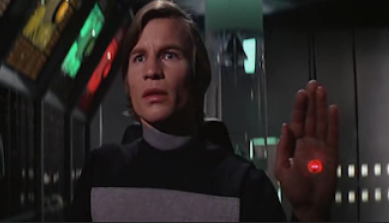Toilets that know you, Tricare shuns Congress, mood-ring tattoo, and more
06 Dec 2022
Posted by Andrew Kantor
DoD to Congress: ‘We’re not listening’
The Department of Defense, it seems, isn’t interested in meeting with Tricare stakeholders and members of Congress.
DoD officials did not respond to the invitation sent by Buddy Carter and 48 other members of Congress to sit down with health care professionals and Tricare beneficiaries who have been impacted by Express Scripts dropping it from their coverage.
Carter’s office said the planned December 7 listening session has been cancelled; another might be attempted after the new year.
Preparing for the next shortage
The associate director of the FDA’s Drug Shortage Staff, one Valerie Jensen, has what seems like an obvious idea: She wants to intercept drug shortages before they become shortages. How? By having drug makers report increases in demand.
And it’s not just demand for a particular product — it’s as much as about demand for a particular facility. As vaccine and respiratory medicine demand increased, it meant manufacturing lines were being used for those, and not for other drugs … like, say, amoxicillin.
“I think that really the key is early notification. The earlier companies let us know about an issue the earlier we can deal with it.”
A different kind of (potential) HIV vaccine
In the latest case of “great news but still early” is a potential HIV vaccine. A small trial out of the NIAID and the Fred Hutchinson Cancer Center the (48 participants) found…
35 out of 36 of those dosed with the vaccine candidate showed activation of broadly neutralizing antibody precursor B cells that could produce the first step on the way to immunity.
It uses an entirely different system: Recipients will get multiple shots…
… each using a different HIV particle to train the immune system. As the shots progress, the molecules get closer and closer to that of the actual HIV viruses, until antibodies produced can bind to many different kinds of HIV.
The mpox emergency will end
U.S. Health Secretary Xavier Becerra said that monkeypox will no longer be considered a public health emergency after January 31.
An ethically solid Parkinson’s treatment
It’s possible to treat Parkinson’s by replacing patients’ dying dopamine-producing cells with new ones — well, it at least it showed “encouraging results.”
Biiiiiiig problem: Those cells had to come from aborted fetuses. Obviously a non-starter.
But now British and Swedish biologists have a better method: stem cells, created in the lab, without boots being stuck in an ethical morass.
They know the concept is sound; it’s just a matter of making sure it works outside the lab. “[I]t will take several years before we will know that these work and can be used as standard treatments for Parkinson’s disease.”
Omicron booster from the little ones
Pfizer and BioNTech have asked the FDA for an emergency use authorization for their Omicron booster for people from 6 months to 5 years old.
Right now it’s only authorized for kids over 5. If the FDA goes along, the little tykes would get three shots: Two of the original vaccine and one of the new booster.
Raise your hand if you’re stressed
Forget mood rings. If you want to see if you’re stressed, researchers in Texas have developed an electronic tattoo that would be … printed? inserted? in the palm of your hand, measuring your stress level and reporting to a smartwatch. (Their breakthrough was a circuit that was unobtrusive and could stand up to the abuse of whatever patients do with their hands.)
“It’s so unobstructive that people sometimes forget they had them on, and it also reduces the social stigma of wearing these devices in such prominent places on the body.”

Stressed
Medical science marches on
Sniffing for cancer
Italian scientists are testing an “electronic nose” that would — if it works — sniff urine to detect prostate cancer. Dogs can do it, so an artificial version isn’t out of the question.
The e-nose system demonstrated 85% accuracy in detecting the prostate cancer samples.
But… it also had a lot of false positives, with more than 20% of healthy patients receiving a result positive for prostate cancer.
Not exactly the Iron Throne
Stanford engineers are working on a “smart toilet” that would “detect a range of disease markers in stool and urine, including […] irritable bowel syndrome, prostate cancer or kidney failure.”
[The system uses] motion sensing to deploy a mixture of tests that assess the health of any deposits. Urine samples undergo physical and molecular analysis; stool assessment is based on physical characteristics.
And then there’s Georgia Tech
…where acoustical engineers have developed a bathroom sensor that can identify gastrointestinal diseases, including cholera, by — we kid you not — listening to you go to the bathroom.
Each audio sample of an excretion event was transformed into a spectrogram, which essentially captures the sound in an image. […] Spectrogram images were fed to a machine learning algorithm that learned to classify each event based on its features.
Bonus: The lead researcher describes himself as “an engineer with a passion for fluid mechanics.”


